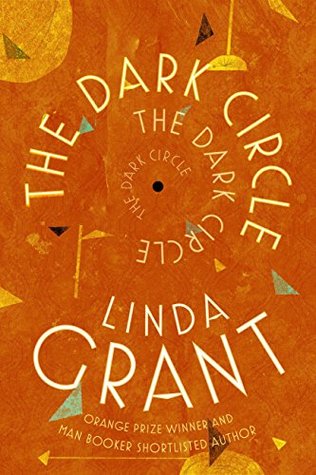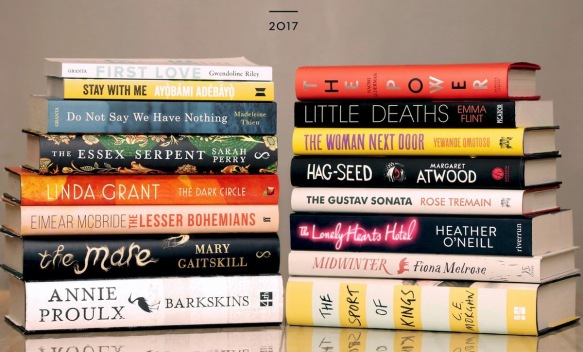The second world war’s been over for four years but London’s still drab, dreary and drizzly. Into the centre, to Trafalgar Square, comes eighteen-year-old Lenny Lynskey who, upon hearing the anti-Semitic speaker there, throws his lunch at him:
Chopped fish on rye assaulted the speaker’s cheek. The smell of herring barrel was all over his face and collar. Minced onion fell down his neck. Cake crumbs got inside his nostrils. There was a meal all over him. His supporters rushed to help. Others thought he’d been shot by a silent gun. Find the bastard, cried the crowd, give him a good hiding, the cowardly little –
Next to him a muscular individual in a pea jacket, as if he’d stepped off the deck of a merchant vessel, was raising his arm. The arm had a fist at the end of it and something bulging beneath the fingers. ‘The fucking little Jew-boy swine the kike-nosed prick let him have it.’
Lenny is rescued by his twin-sister, Miriam, who sees the event from the florist’s shop where she works. Lenny and Miriam are close, have never not spent a day together. He sees it as his role to protect her from the boys who are ‘mad for her’.
After the event, Lenny heads off to his army medical. He knows he’s not going to be enlisted as his Uncle Manny’s paid a guy to ensure he’s not fit. What neither of them are aware of is that Lenny isn’t fit and soon he and Miriam are being taken to a sanatorium to be treated for tuberculosis. One that people go into but very rarely return from.

Grant uses this to show the changes taking place in society at this time. The twins, who are ‘common’, are only able to access the sanatorium due to the wonders of the newly established National Health Service. Of course, not everyone is convinced that this is a good thing:
Mrs Carver, Matron you must call her, did not have to check her files to know that they were coming under the new National Health scheme and wouldn’t pay a penny out of their own pockets, they could hang around as long as they liked and it wouldn’t cost them a farthing. And they would stay, she felt sure of that. They would burrow into the system like parasites and milk it for everything they could get. Clean sheets, wholesome food, all the leisure time in the world. It was a skiver’s paradise, a sanatorium which had been built for a better class of persons, and there was nothing at all that she could do to protect the admirable Lady Anne from the sight of cheap loud vulgar people.
Lenny and Miriam have quite an effect on the established patients: Lenny creates a scene in the dining room the following morning when he can’t see his sister; Miriam, who is prescribed the rest cure and is confined to the veranda to allow the cold air into her lungs, begins to form a relationship with her roommate, Valerie. As Miriam introduces Valerie to make-up and hair techniques and standing up for herself, Valerie introduces Miriam to Kafka, and their worlds blend into each other.
Then, into the already rocked world of the sanatorium, comes the American sailor Persky, with his blue denim and his rock n’ roll records and cunnilingus. All of which, he delights in introducing to the patients. (The latter is passed around as a delightful little secret throughout the book. Grant clearly had some fun with this.)
This is also the era of television. The girlfriend of one of the patients works as a producer and explains to her friend, an MP:
‘The radio types are terribly condescending. We’re caught in a bit of a contradiction – the upper classes consider us a vulgar little peep show and the masses can’t afford a set so no one is taking us very seriously at the moment.’
Grant invites the reader to draw parallels to today. In this instance, it would be the discussion about new technologies – the internet, tablets, ereaders – and the fear they will lead to the death of the book and our brain cells. In other parts of the book, she makes the connection more explicit; the MP returns, the girlfriend having asked him to manipulate things so her partner can be one of the patients on a trial of new drug streptomycin, which appears to be a cure. Not only is there the link to the ‘postcode lottery’ in the UK but this is the MP’s take on the request:
We were all in this together, that was the purpose of the political life and of his party, the clearing of the slums, the building of five million homes, the creation of the Health Service, ironing out differences, but could you ever, really? Wasn’t life just made up of endless oddballs like her?
You tried to be fair, you tried to have no special preferences, everyone had their own set of individual grievances. They came to him with their tales of sorrow and injustice and you tried to help but God, he had had absolutely no idea there would be so many of them. The middle class was a thin lacquer overlaying a great sore of misery. He was middle class, wasn’t everyone? He’d thought so until now. People like him had connections, they knew how to make things work to their advantage and that was wrong, but how the hell do you stop yourself? Are we not individuals first, members of society second? Nothing was fair, though you did what you could to make it fairer.
Tony Blair’s got a lot to answer for.
While the first two sections of the novel are very good, it’s the third that really turns this into a great novel. Grant sends a group of the characters to Mallorca – this also being the beginning of Thompson’s package holidays – where the tension rise and, amidst the heat, relationships are formed and broken and futures are decided. Whereas the world invaded the closed quarters of the sanatorium in the first two sections of the novel, the modern world opens up to those who’ve survived in the third. It’s among the best writing I’ve read this year.
The Dark Circle looks at change, at the way modernisation occurred after the second world war. Grant focuses on class, using the likeable, funny, brash twins to aid the reader in rooting for this collapsing of societal barriers, along with the establishment of the NHS, the rise of television, the influence of America, and the rise of the package holiday. It’s the point at which society really began to allow people to become anything they wanted to be, to move through the class system beyond their roots.
Grant takes the reader through quite a large cast of characters, skilfully interweaving their points of view into the narration so it never feels as though we’re being jolted between viewpoints or losing track of who’s who.
The real triumph of The Dark Circle though is how Grant nudges the reader to draw parallels to society today: to the discussion around immigrants, to the death of the NHS, to the rising class inequality, to the narrowing of horizons. She ends the novel by mentioning that tuberculosis is ‘undergoing a revival’, unfortunately it’s not the only thing.
If you’re interested in learning more about the novel and hearing other people’s views of it, it will be discussed on the following sites throughout the next week.

Thanks to Virago for the review copy.














































 Photo by Wayne Thomas
Photo by Wayne Thomas


